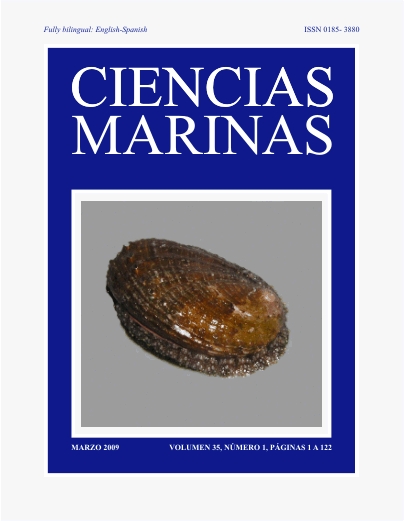Effect of solar and artificial UV radiation on photosynthetic performance and carbonic anhydrase activity in intertidal macroalgae from southern Spain
Main Article Content
Abstract
The effect of UV radiation on photosynthetic rate and carbon uptake, estimated as carbonic anhydrase activity, was studied by incubating intertidal algae, Fucus spiralis (Phaeophyta) and Ulva olivascens (Chlorophyta), under both artificial and solar radiation. In these experiments, treatments excluding UV-B or UV-A + UV-B radiations were applied. Thalli of U. olivascens and F. spiralis showed completely different responses when exposed to artificial radiation and three different light treatments (PAR + UV-A + UV-B, PAR + UV-A, and only PAR). After exposure for 24 h, photosynthetic activity increased in F. spiralis, although the presence of UV-B slightly reduced the increase, whereas U. olivascens showed an inverse pattern, with decreasing photosynthetic rates in all the treatments and with the lowest decrease in the presence of UV-B radiation. Surprisingly, the presence of UV-B stimulated carbon uptake, though this effect was more clear in the case of F. spiralis, while a similar inhibitory effect of UV-A radiation was found in both species. Thalli of U. olivascens and F. spiralis were also exposed to solar radiation for daily and yearly periods. The photosynthetic rate was coupled to incident irradiance in F. spiralis, whereas in U. olivascens a significant decrease in the presence of both UV-A or UV-A + UV-B was found. A significant increase of carbon uptake in the presence of UV-B radiation was observed in U. olivascens, while no clear pattern was found in F. spiralis under any of the light treatments. During an annual cycle, carbon uptake in U. olivascens decreased in winter, compared with the initial levels, in the PAR and PAR + UV-A treatments. The high level of carbon uptake was maintained until the end of spring, when higher levels of incident energy might promote photoinhibition (in the presence of UV-B). The absence of a general response to UV radiation in the macroalgae studied may be due to their different photoprotection mechanisms, physiological-morphological characteristics, and acclimation to environmental conditions.
Downloads
Article Details
This is an open access article distributed under a Creative Commons Attribution 4.0 License, which allows you to share and adapt the work, as long as you give appropriate credit to the original author(s) and the source, provide a link to the Creative Commons license, and indicate if changes were made. Figures, tables and other elements in the article are included in the article’s CC BY 4.0 license, unless otherwise indicated. The journal title is protected by copyrights and not subject to this license. Full license deed can be viewed here.

